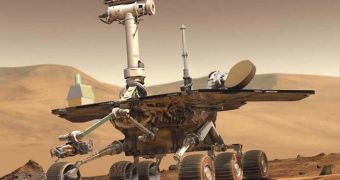The next mission on Mars is going to be the Mars Science Laboratory (MSL), slated to launch in autumn next year, as a successor to the Exploration Rovers Spirit and Opportunity, and to the recently ended Phoenix Lander. Among the main goals of the MSL will be to find traces of organic compounds on the Martian surface. While attempting to do so, it might detect signals from a compound carried from the Earth by the device itself, which made scientists more concerned about contamination issues.
Another reason that makes experts worry is the high degree of sensitivity featured by the Laboratory's instruments, some of them being capable of holding a single nanogram of matter (a billionth part of a gram), nearly the mass of a human cell. "Even though MSL is not designed as a life detection experiment, any type of microbes, either dead or alive, could confuse the types of signals we are looking for. So we need to be as clean as possible," explains Paul Mahaffy, MSL scientist, NASA's Goddard Space Flight Center, quoted by Space.
Researchers are attempting to avoid contamination in a series of ways, such as using class 1000 to class 100 clean chambers during the development of the MSL. Class 100 clean chambers only permit the presence of less than 100 particles within a cubic foot (by comparison, a cubic foot of air in an office holds several million particles of which most are dust). Even the materials the laboratory is made of (plastics and elastomers) could be a source for contaminating organic particles which could make their way to the Martian soil.
Another simultaneous approach is to determine any such presence of particles from the Earth or from the device and anticipate their impact, then building a database containing the results so that such signals are recognized. In addition, an easily recognizable "check" compound which "is a very, very pure and very, very clean material, containing a fluorinated organic compound that has a signature distinct from anything we will find on Mars," as Mahaffy explains, will be used to calibrate the instruments.
"We'll let some of that fall down into one of our sample cups, we will analyze it in our ovens, and if we start seeing signals of any other compounds besides our check material, then we can suspect that material might have been brought by the spacecraft from Earth," shares Mahaffy. As another precaution measure, the MSL will be swiftly deployed on the Martian surface by means of an umbilical-like cable which will be detached upon successful deployment, as the device will be remotely driven far from the landing area in order to avoid contamination from the propulsion compounds.

 14 DAY TRIAL //
14 DAY TRIAL //